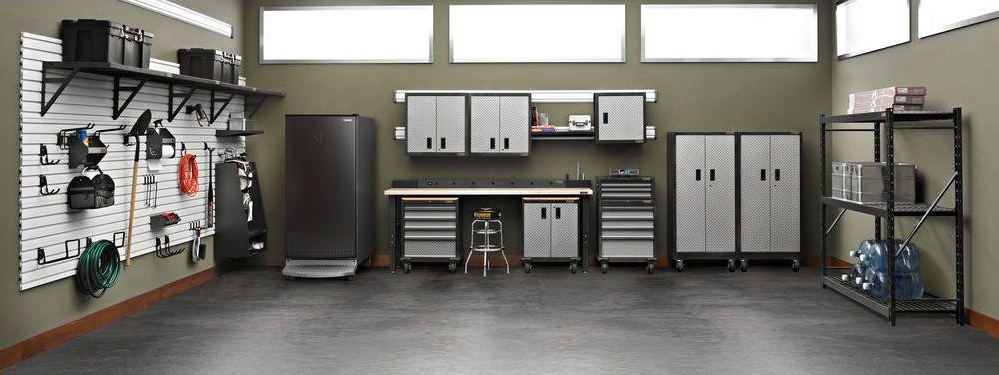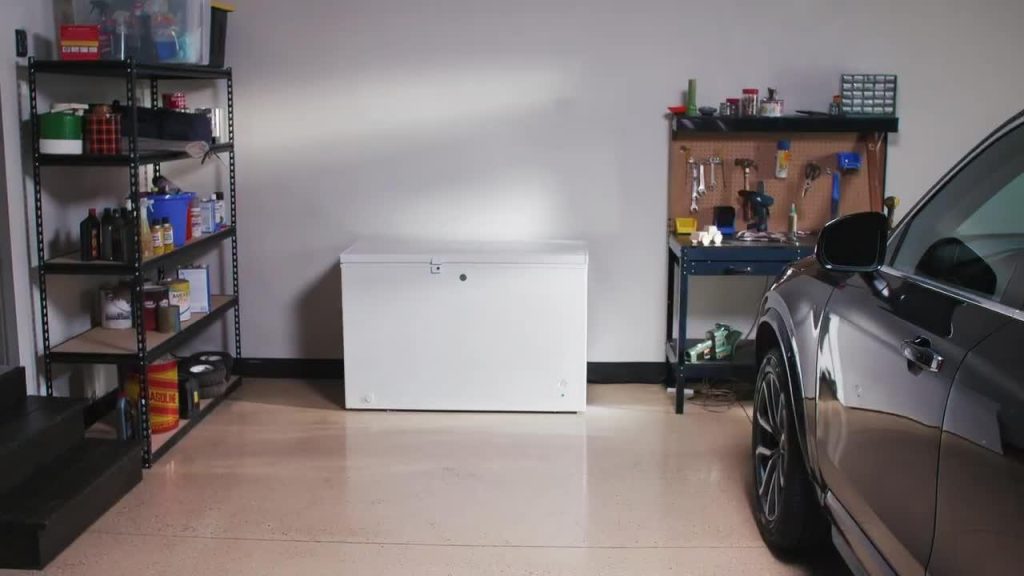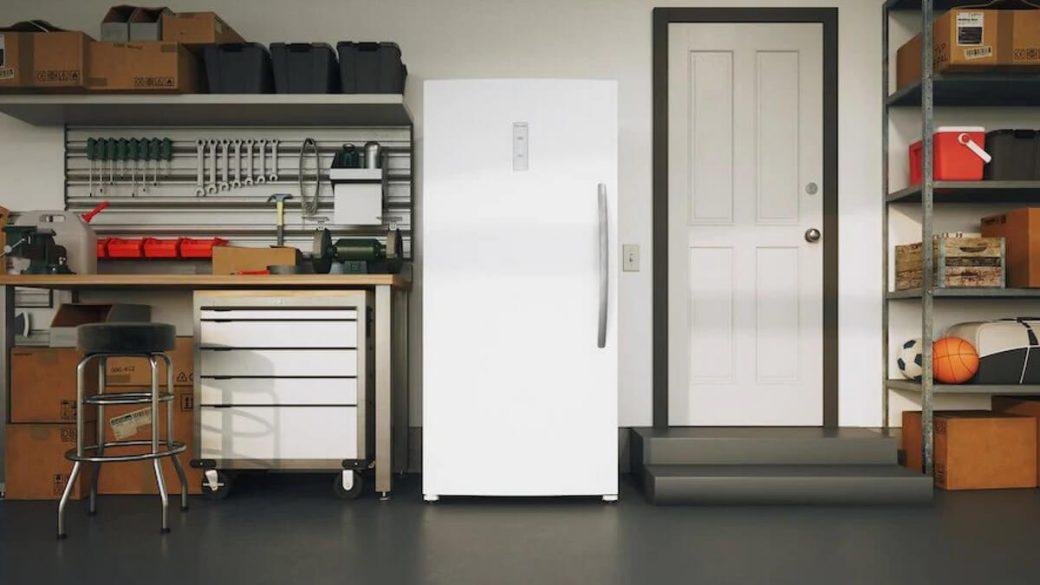If you’re considering getting an additional refrigerator but have limited space inside your home, you can always optimize the use of your garage space. Besides, a fridge in a garage only makes perfect sense. Imagine it’s a hot summer day, you’ve been wrenching on your car for a couple of hours; the only thing better than a cold one at that very moment is a cold one just within your reach. Just pop the fridge and that’s it—if that’s not the dream, I don’t know what is!
Now that you’re convinced about getting a new fridge for your garage, don’t rush to the store just yet. The truth is, the process isn’t as simple as buying any fridge (or reuse an old one), put it in the garage, and plug it in. A garage refrigerator needs to have a tougher overall build, not only to withstand temperature changes inside your garage but also because well it’s a garage. You’ll probably be welding and grinding in there, which will create more dust and all—just about any basic fridge simply won’t cut, or it will, but not for long.
Luckily, we’re here to tell you everything you need to know before buying a garage refrigerator/freezer as well as share some tips and tricks we’ve learned based on our own past experiences. (When discussing this post, many members of GarageSpot’s editorial team had horror stories and lessons learned the hard way to share and we used them all to craft this post so you don’t have to go through the same too).
Hope it helps!
[amazon fields=”B07KR24JMD” value=”thumb” image_size=”large” image=”3″ image_alt=”Whynter TBR-185SR Portable Tool Box Refrigerator”]
I bet that awesome tool chest fridge would look quite good in your garage right?
Climate and Temperature
So, let’s cut to the chase. Temperature is the main reason why you can’t just use a regular in-home fridge as a garage refrigerator.
Garages are often uninsulated, and the room temperature is often severely affected by weather changes. And even if your garage is indeed insulated, it’s then safe to assume that you live in a colder climate. In that case, you may even argue that your garage is heated (or air-conditioned if you live in hotter areas), but garages have huge doors, and opening them will inevitably cause the temperature to drop (or increase), causing wide temperature variations.
Meanwhile, most refrigerators are designed to work in a moderate, steady temperature – commonly between 60-85ºF (15-30ºC), depending on the make and model. Of course, if you live in an area with a reasonably stable climate, this might not be a problem for you, and a standard fridge could work just fine. But unless you live somewhere where the weather stays within that range all year (and I’m totally jealous), you’ll need to look for a fridge built a little tougher than most.
If It’s Too Hot
If you lie in a scorching hot climate, say 100ºF/38ºC or higher, average refrigerators work harder than usual to keep everything cold. This over pressurizes the vital components (e.g., the compressor, condenser fan motor, etc.), and may shorten its lifespan. Besides, the significant difference between the internal temperature and the outside can cause moisture condensation on the fridge’s metal parts, leading to premature corrosion.
See Also: 5 Best Upright Freezer for Garage

If It’s Too Cold
Curiously, things can get even worse in freezing conditions. Most standard refrigerators with a built-in freezer work by freezing the air in the freezer section first, then use the rest of that cold air to keep the refrigerator section around 38-40ºF (3-4ºC). This type of fridge usually has a single thermostat monitoring the temperature in the refrigerator section. It also controls when the compressor should run to keep the freezer cold.
So, when the garage’s temperature falls below that typical range for the refrigerator, the thermostat won’t bother to activate the compressor since the air seems already more than cold enough, picking up the outside temperature instead. As a result, the freezer section would eventually defrost without the compressor kicking in, and the content will eventually thaw.
Of course, if the garage’s temperature was to go below the freezing point (32ºF/0ºC) (which is definitely not recommended anyway), the problem would flip. The freezer will stay frozen, but the stuff inside the refrigerator would freeze as well. Items like fruits, vegetables, and drinks would now be frozen and ruined. However, since we are talking about a home garage here, below zero temperature is very unlikely, but just in case—we like our beer cold but not that cold!
What Makes a Refrigerator or Freezer Suitable for Garage Use
To be considered as a good garage fridge, the model you choose must be able to survive those wide temperature variations without ruining what’s inside.
Garage refrigerators need to come with enhanced insulation to deal with those temperature changes. This shall keep both the freezer and refrigerator sections working at an optimum temperature level without being too affected by the room temperature. Moreover, better insulation will also consistently maintain the ideal working temperature for its electrical components.
At the same time, you need to know the fridge’s operational temperature range. Not every make and model is the same, so don’t simply trust the manufacturer’s marketing that says its refrigerator is suitable for garage use (they all say that anyway). Instead, check the “installation” section inside the owner’s manual to find out the recommended room temperature for the fridge to work properly. If the operational temperature matches your garage’s normal range over a full year, you should be good to go.
See Also: 5 Best Chest Freezer For Garage

Tips on Getting a Garage Fridge
With many things to consider, getting a garage refrigerator might give you a headache. Thankfully, some manufacturers have made it easier by producing specific garage refrigerators. They usually have better built-in insulation, a more rugged build, and are relatively eco-friendly. Some of them even have integrated wheels to make it easier to move around.
So to get you around that headache, we’ve summed up three important tips to consider when shopping for a garage fridge—and you only need to go with either one of them.
Get a Garage Fridge with Separate Thermostats
Remember when I said the freezer section of a fridge would defrost when the room temperature gets colder? That’s because there is only one thermostat that triggers the compressor, and it’s located in the refrigerator section.
However, some garage-ready refrigerators tackle that with two separate thermostats — one in the fridge and another in the freezer. This is the best of both worlds.
Get Either a Freezerless Garage Refrigerator or a Standalone Garage Freezer
The main problem with a garage fridge occurs when it has a built-in freezer, hence the need for the two separate thermostats. To avoid this situation, you can always buy them separately, a freezerless garage refrigerator or a standalone garage freezer.
But depending on your needs, you can also buy a convertible refrigerator freezer. This particular unit allows you to have the flexibility to convert a standalone freezer unit to become a regular refrigerator when you don’t need to freeze anything.
Keep in mind that you still need garage-rated units, despite losing the union. In simpler terms, no matter the fridge type you end up getting, they should both have a compressor and insulation able to withstand wide temperature changes. Also, as the unit can’t freeze and refrigerate simultaneously, you should choose wisely on which one you’d miss the most not having (unless you have enough room for both).
[amazon fields=”B07R11HWBW” value=”thumb” image_size=”large” image_alt=”Galanz GLR10TRDEFR True Top Freezer Retro Refrigerator”]
Install a Garage Refrigerator Kit
Alternatively, if you’re not keen on buying a whole new refrigerator, you can always install a garage refrigerator kit to turn your regular in-home fridge into a garage-ready unit. A garage refrigerator kit is an affordable small heater that tricks the thermostats into thinking that the room temperature is higher than it is. As a result, the compressor will keep running despite the lower room temperature.
This kit costs around $20-$30 and should work universally with most refrigerator brands. It comes with instructions and is pretty easy to install. But I wouldn’t recommend you doing it yourself if you’re unfamiliar with basic wiring or feeling uncomfortable taking apart your fridge’s control box.
Besides, your regular fridge still won’t be prepared for a scorching hot climate. And sadly, there are no fancy solutions to this.
Nonetheless, you can pull the fridge away from the wall and add a fan/portable AC to cool down the unit when the temperature is very high. You can also try to keep the fridge full, so there’s barely any room for warm air to get in as you open it. Lastly, if you’re expecting extended hot spells, consider unplugging the fridge until the temperature falls a bit.
With a limited budget, you’ve got to work with what you have, right?
Last Words
Overall, if you want to get a refrigerator for your garage, you definitely can. Just make sure all the variables, such as your area’s climate and your fridge’s operating temperature, meet the required standard. Also, remember that your fridge needs to be adequately insulated for the job.
I hope you found this article helpful in your garage fridge hunt. For more consumer advice, feel free to read our reviews of garage freezers (upright and chest) and garage refrigerators here.
Have a nice one!







